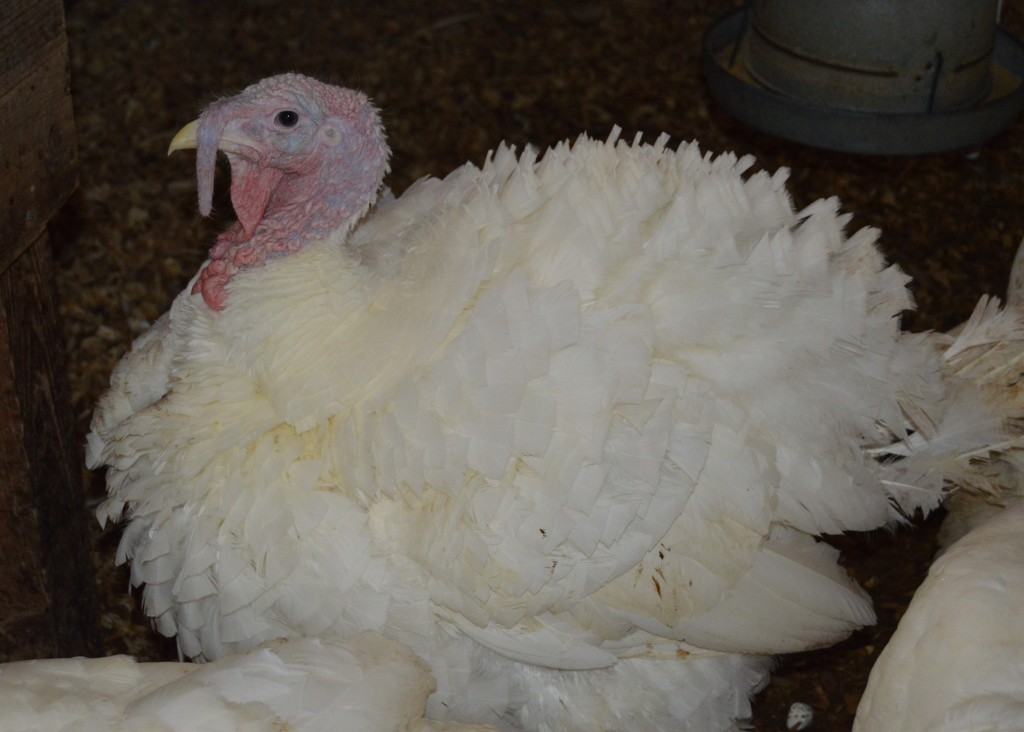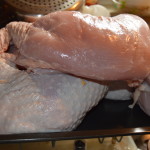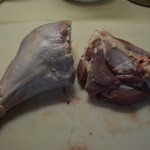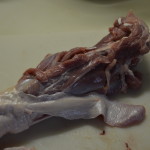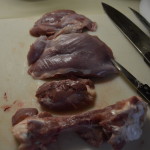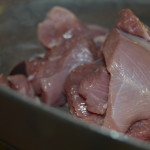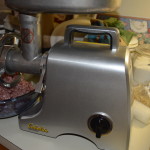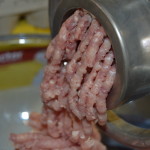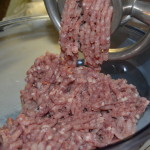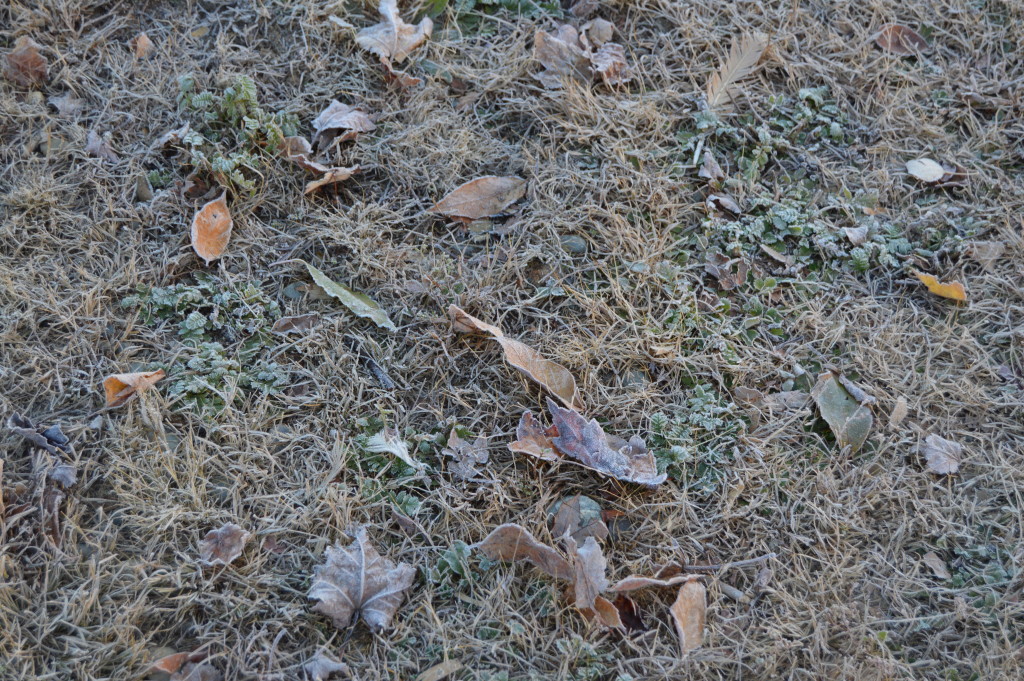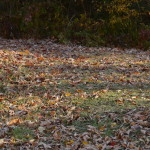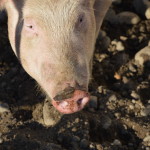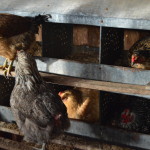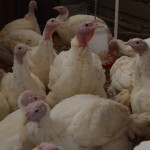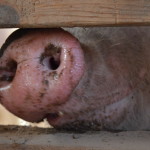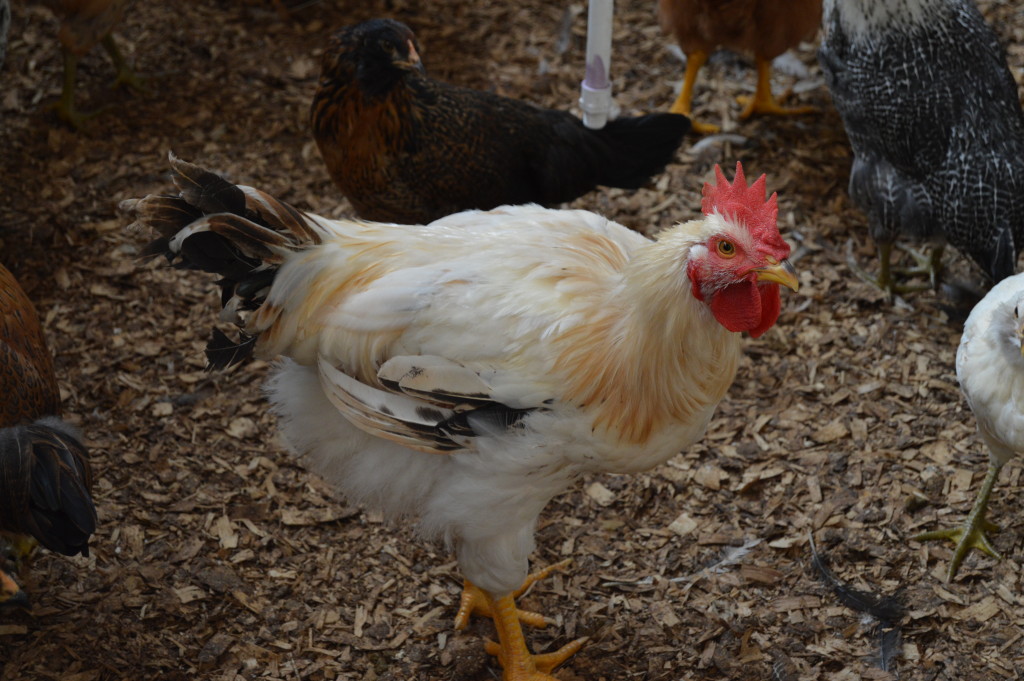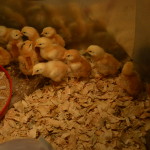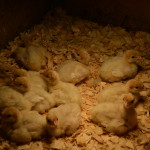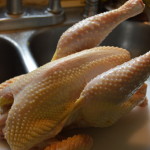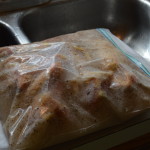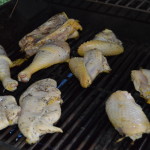We raise the majority of our meat here on the homestead. Since we don't raise beef we use ground pork and ground turkey when cooking calls for ground meat. The pork is all ground and packaged for the freezer when it comes home from the butcher but not so for the turkey. They arrive back on the homestead as whole birds. From there I need to process them into ground meat. Actually I cut the breasts off and then into two roasts and the rest of the bird is made into ground turkey.
The legs and wings are cut from the body followed by the side breasts. The skin is removed from the breasts then They are cut in half or sometimes thirds depending on the size of the turkey. Each breast roast is then vacuum sealed, labeled and dated. Then the real work begins. I remove all the meat that I can from the carcass then each leg quarter is skinned before separating the pieces. I find it is easier to skin the whole leg quarter then each individual piece. After cutting the leg quarter apart the deboning begins. The thigh is a piece of cake but the leg takes a little more precision. With all the sinew and small bones it is important that you use a sharp knife. I actually use my paring knife freshly sharpened by my husband. I find that the short sharp blade is good for cutting around all the small bones and sinew of the leg.
Once you get all the leg quarter meat off it is time to move on to the wings. Again, I skin them with all three joints in place. However, I only skin to the first joint. The wing tip is then removed and ready for the broth pot. The second section is really hard to skin so I leave it whole and save it to make monster buffalo wings later. I then debone the the largest part (closest to the body) of the wing.
As you can see there is quite a bit of meat left despite my sharp little knife. This along with the carcass can be roasted then simmered to make a wonderful turkey broth that is canned. I use this broth all year for soup and stew bases.
All the meat that has been cut off the bones is cut into chunks that will fit into my grinder's feeder tube. As I think I mentioned in a previous post we use a stand alone electric grinder since we do a lot of meat grinding. I wore out two grinding attachments for my KitchenAid mixer before we purchased this one.
I use a #12 grinding disc for the turkey meat. It is not as fine as I would use for beef but it dose not turn the more delicate turkey into mush either.
Before I package the ground meat I mix it up with a spoon to get the white and dark meat evenly distributed so each package will have some of both. I use my Food Saver to vacuum seal all our meat. This makes it last longer in the freezer. As you probably know air is the enemy of anything frozen. Taking all the air out prevents freezer burn and the nasty taste it imparts to your food.

Ground meat is packaged in one pound portions and sealed, labeled and dated. It takes me around 45 minutes to do one bird and depending on the size of the turkey it yields between 5 and 8 pounds of ground meat and 5-10 pounds of breast meat.
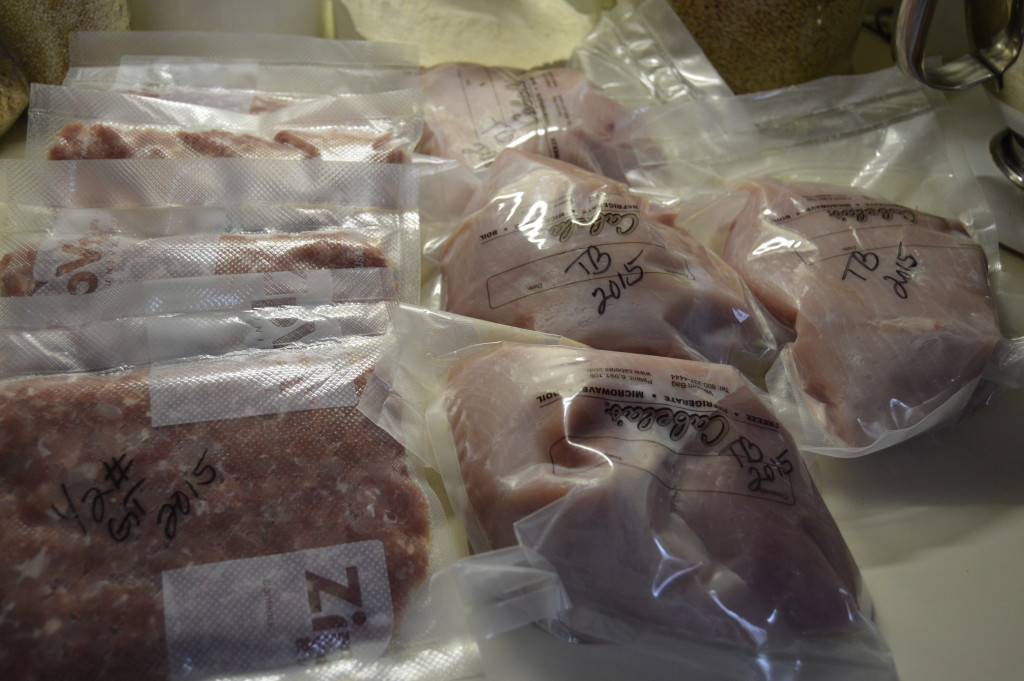
This is the reward for hard work, well actually the big reward is when we eat it. You can see from the marking on the front ground package that sometimes the last bit vacuum sealed is not a full pound but I just mark it as it weighs and then when I need a small amount or extra for a recipe I'll use that package.
Be sure to check back next week. I'm going to share one of my ground turkey recipes with you, Enchilada Bake. I promise it is easy and yummy.
Blessings

